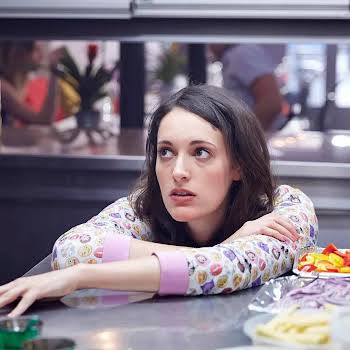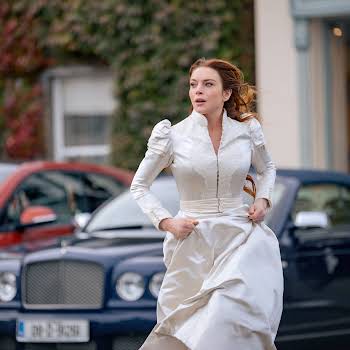
By Jennifer McShane
21st May 2020
21st May 2020
Netflix’s The Politician will have a second season airing at the end of June and releasing a new poster showcasing a mobility aid, they have shown that they are trying to be ahead of the curve when it comes to portraying disability as authentically as they can, says Jennifer McShane
I always seem to get flustered when I go to mention the fact that, very occasionally, to get around safely and comfortably, I require the use of a walking frame. I go out of my way to insist that I don’t have to bring it with me if people are bothered by it (even though I really do) and that it’s really fine. I am fine without it.
Only the thing is, I’m not really.
I’m okay without it, but I’d be better with it.
It’s clucky and long and awkward to set up and fold. But it’s a necessity if you have mild Cerebral Palsy (CP) as I do.
When I try to explain it, I generally don’t have a point of reference.
That is until I watched brilliant actor Ryan J. Haddad in the Politician. He also has CP, in life and in the show, and refreshingly, it isn’t used as a plot point. He just is himself. He has CP, he uses the frame to get around as I do, and that’s it.
It’s just seen for what it is – it’s there and that’s that.
The series doesn’t go out of its way to highlight his disability and that feels groundbreaking in itself.
Because in life, I never see that. There’s me, in my frame, hastily apologising for getting it in people’s way (I hate that I do that; assume I must repeatedly apologise for having it).
Why can’t I be more like Ryan’s character Andrew Cashman, the sassy high school senior who takes no BS?
Case in point:
View this post on Instagram
I think I’d be less anxious if I saw disability aids portrayed more on screen. I’d have more of a reference point.
But the use of mobility aids isn’t normalised in society. We primarily associate them for use when we have an injury or perhaps as we reach the later stages of our lives but I’ve found that if you aren’t in either of those brackets, you’re looked at more. And frame-first at that.
It’s because we don’t speak openly about how the use of such an aid can have a life-changing effect on a person’s life. We don’t see them anywhere on screen, not usually. Wheelchairs are more common, and even then, the proportion of disabled stories told on screen is embarrassingly low – a 2015 study found that just 2.4% of characters in the top 100 Hollywood movies had a disability.
My Walker and I
So, when Netflix decided to put Ryan’s walker on the official season 2 poster, it felt like a big moment.
It is a big moment.
My now-reference point in all is vivid, coloured glory, under Bette Mildler’s elbow.
I have many questions about it: Did Ryan advise how it should look? The position it should be in? (A source of strife for me is always how to leave it so it won’t trip others up). Where his handles always black? (Mine are red).
It won’t change the world, but it’s a hell of a start for this community, something so normal in so many of our lives, right up there for all to see. It’s no small thing that Netflix, arguably the most popular streaming service out there, should do this.
Thousands upon thousands will see the poster. Millions will watch the show.
“My walker and I…” said so eloquently too.
Thank you Netflix, I feel so seen.
Main photograph: Netflix
More like this: ‘I hope it shifts perspectives’: Netflix’s extraordinary CRIP CAMP is a must-see
More like this: These four films changed the way I saw my disability
More like this: ‘I remember hearing the words “she’s disabled” and wondering who they were talking about’























